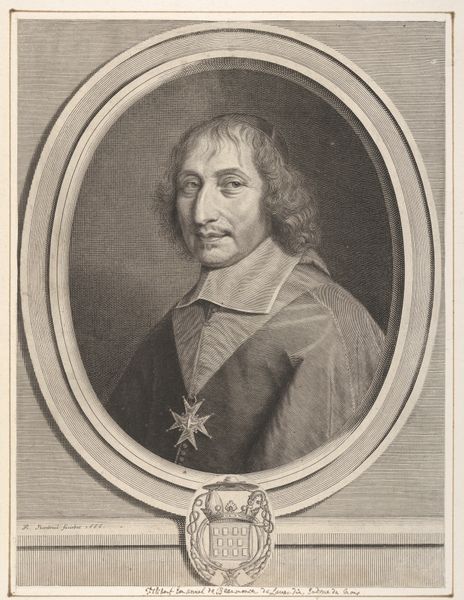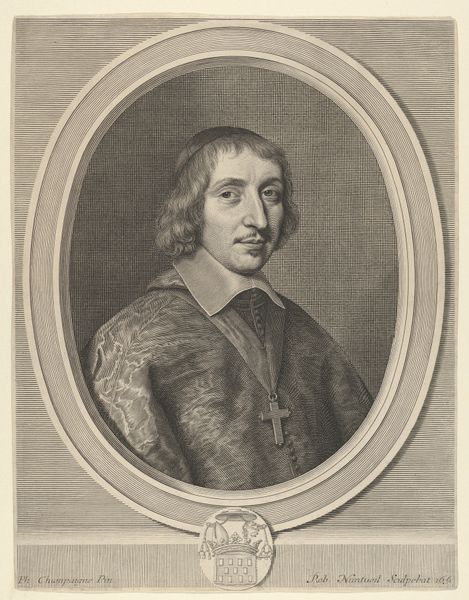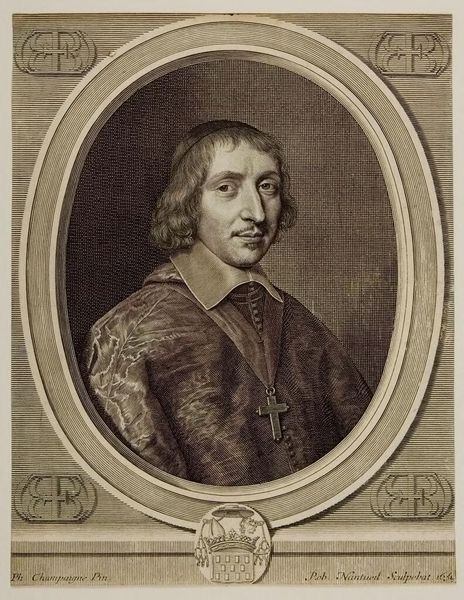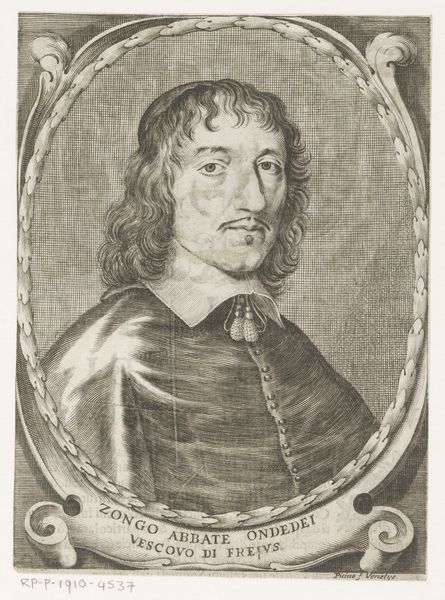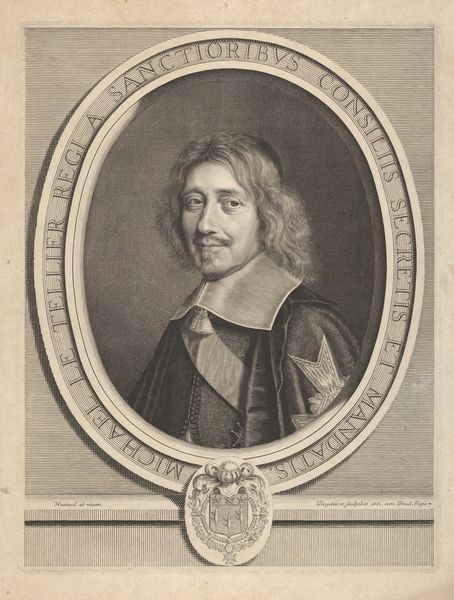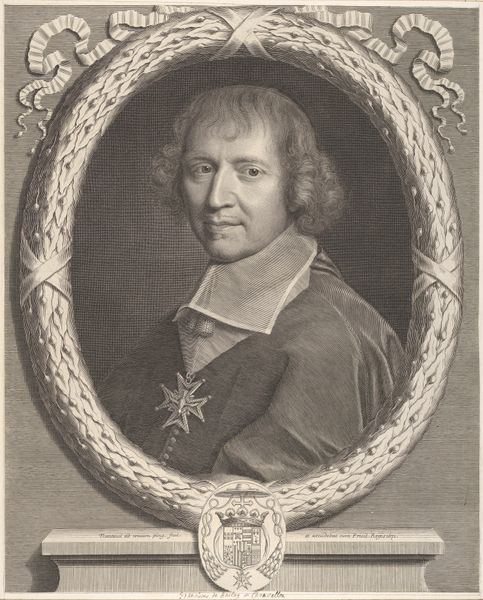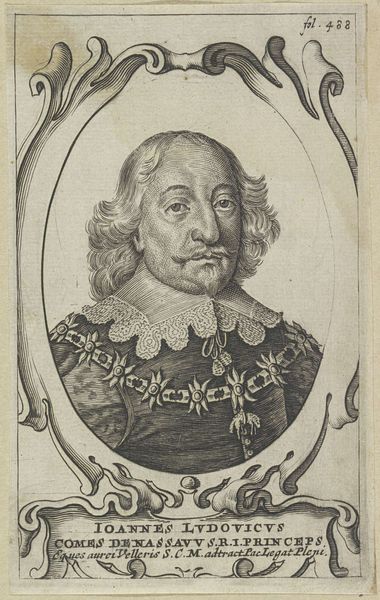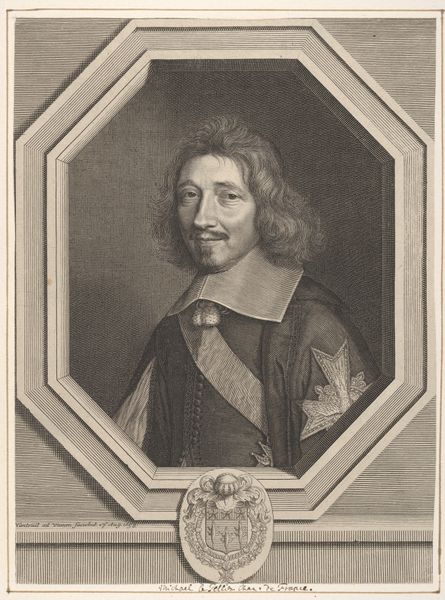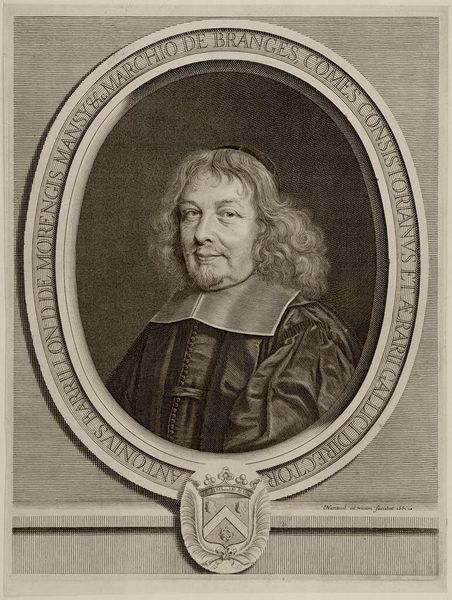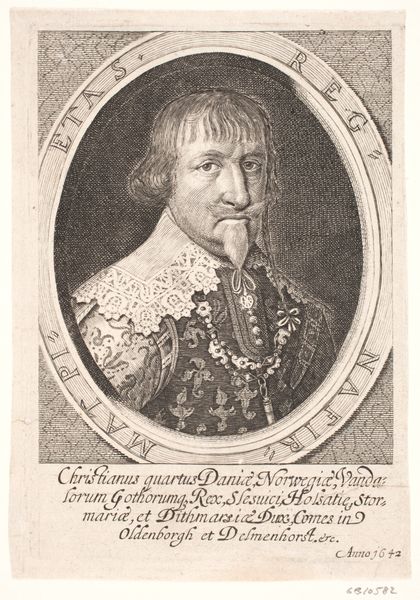
drawing, print, engraving
#
portrait
#
drawing
#
baroque
# print
#
cross
#
men
#
engraving
Dimensions: Sheet: 12 1/8 × 9 9/16 in. (30.8 × 24.3 cm)
Copyright: Public Domain
Curator: This somber yet compelling image is an engraving dating from the mid-17th century. It depicts Léonor Goyon de Matignon, rendered by Robert Nanteuil. Editor: I'm struck immediately by its formality and restraint. There is an incredible contrast between the heavy, dark robes and the starkness of the background, making the subject all the more imposing. The frame within the frame also feels restrictive, like he’s captured or confined. Curator: The oval frame you note, and the elaborate coat of arms below, were standard conventions for portraying members of the French aristocracy at this time. These weren’t candid shots. Each element had symbolic meaning relating to lineage and social position, reinforcing their perceived divine right. Nanteuil’s skill truly captures not just the likeness, but also the gravity of holding power. Editor: Exactly. This reminds me of how deeply ingrained power structures were, right down to the details of an engraved portrait. Consider the symbolism of the cross prominently displayed - a clear marker of his religious authority bolstering secular authority. It's a very effective piece of propaganda, consciously projecting a particular image. Curator: Indeed. And it's through the manipulation of these symbols, understood by contemporaries, that a narrative of power and piety is constructed and reinforced. The sitter’s slightly downturned gaze evokes humility. This combination was intentional in an era defined by courtly spectacle. It reflects attempts to subtly navigate social and political perception, not through grand gestures but carefully curated details. Editor: Yes, and thinking about contemporary viewers, this portrait isn't just about presenting a historical figure. It reflects broader concerns about representation itself and how individuals navigated complex roles within systems of power. I wonder how effective the portrayal was and what impact that representation of combined secular and spiritual authority had on its audiences. Curator: Perhaps a call to empathy? After all, we still decode and project visual signals, consciously or unconsciously, within today’s social dynamics. The scale might be different but that central theme is timeless. Editor: Definitely timeless and prompting self-reflection for modern eyes. How are *we* representing authority now, and who has access to shape these representations?
Comments
No comments
Be the first to comment and join the conversation on the ultimate creative platform.
